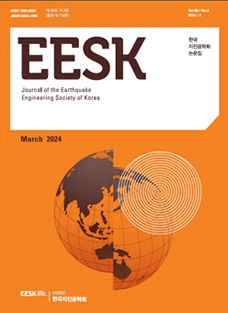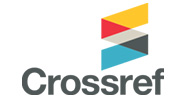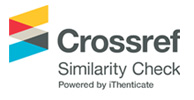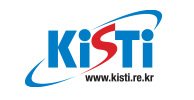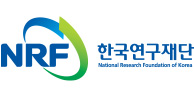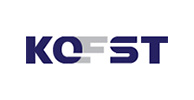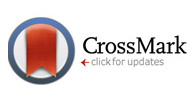1. 서 론
미국의 내진설계기준[1]에서는 건물의 점유용도, 공공안전 위험 정도, 인명보호, 그리고 지진발생 시 건물붕괴로 인한 사회・경제적 영향 등을 고려하여 건물을 I에서 IV의 위험도범주로 분류하고 있다. 미국 내진설계기준 ASCE/SEI 7[1]의 위험도범주는 국내 내진설계기준 KDS 41 17[2]의 내진등급에 해당하며, 국내 내진설계기준[2]에서도 건물의 중요도에 따라 내진설계수준을 분류하여 내진특등급, 내진I등급, 내진II등급으로 구분한다.
미국 내진설계기준[1]에서는 인명피해 위험이 낮은 농업용 건물이나 소규모 창고 등을 위험도범주 I, 일반 용도의 상업용 및 주거용 건물을 위험도범주 II로 분류하고 있다. 위험도범주 III는 건물 붕괴 시 인명피해를 초래할 수 있는 건물의 등급을 의미한다. 위험도범주 IV 건물은 재난발생 시 재난대처와 재해복구에 필수적인 시설(예: 병원, 소방서, 경찰서, 재난방재센터, 응급통신센터 등)로, 재난으로 인한 건물의 기능 마비 시 매우 큰 인명피해가 발생하거나 심각한 사회적 혼란이 초래될 가능성이 있다. 따라서, 위험도 범주 IV로 분류된 건물은 지진발생 중이나 후에도 건물의 본래 기능이 지속해서 유지되어, 지진재난의 발생으로 인해 지역사회에 미치는 영향을 최소화되도록 해야 하는 중요 역할을 해야 한다.
국내외 내진설계기준[1, 2]에서는 공공안전 확보와 지진 발생 중, 후 건물 기능 유지의 필요성을 반영하여 높은 위험도범주 건물의 내진설계 시 낮은 위험도범주 건물의 경우에 비해 보다 강화된 내진설계요구사항을 적용하고 있다. 특히, Table 1에서 보이는 바와 같이, ASCE/SEI 7[1]에서는 높은 위험도 범주 건물의 내진설계 시 일반용도 건물의 경우에 비해 더 높은 지진 중 요도계수 Ie를 사용하여 설계 밑면전단력을 증가시키도록 한다. 또한, Table 2에서 제시한 것과 같이, ASCE/SEI 7[1]에서는 높은 위험도범주 건물의 내진설계 시 일반용도의 낮은 위험도범주 건물에 비해 더 낮은 허용 층간변위비로 변위요구사항을 만족하도록 하고 있다. 따라서, 미국 내진설계기준 [1]에서는 강화된 내진설계요구사항의 적용을 통해, 중요 건물의 전체 횡강도 및 횡강성을 키움으로써, 설계하중 이상의 지진발생 후에도 중요 건물의 본래 기능이 유지되도록 하며, 구조재나 비구조재의 지진피해 보수와 관련된 경제 손실을 최소화하여 중요 건물의 내진안전성을 높이고자 한다.
중요 건물의 내진성능평가에 관련한 과거 연구사례[3, 4]를 보면, 중요 건물의 내진설계 시 높은 내진 중요도계수 사용(Ie > 1.0)과 낮은 허용 층간변위비 제한이 중간 규모 수준의 지진에서 중요 건물의 구조적 손상을 줄이고, 붕괴위험도를 낮추는 데 효과적임을 보였다. 특히, Hwang et al.[3]은 역량 설계된 위험도범주 II와 IV의 3, 9층 철골 특수 모멘트골조시스템 건물의 붕괴위험도를 평가하여, 일반용도 건물의 붕괴위험도가 중요 건물의 경우보다 대락 7배 높은 것으로 보고하였다. 또한, 일반용도 건물은 미국 내진설계기준[1]에서 제시하는 허용 붕괴위험도인 50년 건물 생애주기 붕괴확률 1%를 만족하지 못한다고 밝혔다.
Hwang et al.[4]은 위험도범주 II와 IV의 철골 특수 모멘트 골조 시스템 건물을 대상으로 긴 지속시간의 지반운동이 건물의 붕괴위험도에 미치는 영향을 정량평가하였다. 특히, 긴 지속시간의 지반운동이 건물의 붕괴위험도에 미치는 영향은 P-Delta 효과가 더욱 크게 작용하는 중・고층 건물에서 뚜렷함을 밝혔다. 또한, 건물의 붕괴위험도 평가 시 긴 지속시간 지진의 영향을 고려할 경우, 강화된 내진설계 요구사항(높은 지진 중요도계수 및 낮은 허용층간변위비 제한)이 적용된 중요 건물일지라도 미국 내진설계기준에서 요구하는 허용 붕괴위험도 수준을 만족하지 못할 수 있음을 밝혔다.
그동안 건물의 붕괴위험도와 관련한 연구[5-10]는 낮은 중요도의 일반용도 건물을 대상으로 주로 수행되었다. 따라서, 높은 위험도범주의 중요 건물이 붕괴안전성을 확보하고 있는지에 대한 연구는 충분히 수행되지 않고, 적은 수의 중요 건물을 대상으로 제한적으로 수행되어 일반화하기 어렵다.
본 연구에서는 현대 내진설계기준에 따라 설계된 다양한 위험도범주의 철골 모멘트골조시스템 건물을 고려하여 건물의 붕괴위험도를 포함한 지진 응답을 평가하였다. 이를 위해 본 연구에서는 다양한 높이, 위험도범주, 그리고 내진설계기준에서 규정한 구조해석법(등가정적해석법 및 모드응답스펙트럼해석법)을 고려하여 ASCE/SEI 7-10[11]에 따라 내진설계된 18개 철골 특수모멘트골조시스템 건물을 선정하였다. 대상건물의 비선형 구조해석모델을 개발하고, 비선형 정적해석 및 동적해석을 수행하였다. 비선형 해석결과를 토대로 다양한 위험도범주 건물의 정적 시스템초과강도, 주기 기반연성도, 붕괴위험도를 추정하고, 이를 통해 건물의 내진성능을 평가하 였다.
2. 대상건물
본 연구에서는 철골 특수 모멘트 골조의 위험도범주별 지진응답을 평가하기 위해, 북미 서부 강진지역의 내진설계기준에 따라 설계된 Harris와 Michel[12]의 건물을 사용하였다. 본 연구에서 고려한 대상건물은 4, 8, 16층의 3개 철골 특수 모멘트골조시스템 건물을 위험도범주 II로 가정하고, 이를 두 가지 해석법[등가정적해석법(equivalent lateral force, ELF)과 모드응답스펙트럼해석법(modal response spectrum analysis, MRSA)]에 따라 내진설계가 수행되었다. 이후, 동일한 골조를 위험도범주 III(중요도 계수 Ie = 1.25)와 위험도범주 IV(중요도 계수 Ie = 1.5)로 가정하여 재설계하여, 본 연구의 대상건물은 총 18개이다. 대상건물의 설계위치는 미국 캘리포니아주의 도심지역(좌표: 37.79°N, -122.40°W)으로, 설계위치의 지반은 국가 지진 위험 경감 프로그램(National Earthquake Hazards Reduction Program, NEHRP) 지반등급 D(평균전단파속도 υs = 259m/s)로 가정하였다.
Fig. 1에서 보이는 바와 같이, 대상 건물의 평면은 직사각형이며, 전체 크기는 46 m × 31 m이다. 모든 철골 모멘트골조시스템 건물의 1층 높이는 5.5 m, 나머지 층고는 4.3 m로 동일하게 설계되었다. 또한, 모든 건물은 동서 방향의 두 개 외곽 철골 모멘트골조 시스템, 두 개의 직교하는 가새골조 시스템, 그리고 내부 중력 골조 시스템으로 구성하였다(Fig. 1(a) 참조).
본 연구에서는 대상 건물의 높이를 4, 8, 16층으로 고려하여, 중・고층 철골 모멘트 골조 건물에 대한 붕괴위험도 평가를 수행하였다. 동서 방향의 횡력을 받는 철골 모멘트골조는 3개의 경간을 가지며, 철골 모멘트골조로 설계되었다. 모멘트골조시스템 내 보와 기둥 구조부재는 미국재료시험협회(American Society for Testing and Materials) A992 Grade 50(공칭 항복강도 Fy = 345MPa) 재료강종[13]으로 제작되었으며, 보-기둥 접합부는 미국 강구조학회 인증접합부인 보 플랜지 절취형 완전강접 모멘트 접합부로 설계되었다.
대상 건물의 설계를 위한 고정하중의 경우, 기준층 및 지붕층은 강재 부재, 강재 데크 및 두께 83 mm 경량콘크리트슬래브(단위중량 1,760 kg/m3)을 고려하여 산정하였다. 또한, 추가 고정하중의 경우, 기계, 전기, 배관 및 기타 하중을 고려하여, 기준층에 대해서는 0.7 kPa, 지붕층은 0.5 kPa을 사영하였다. 각 층의 외곽 수평 골조에는 외장재에 의해 가해지는 외벽 하중을 고려하여 372 kg/m의 추가 고정하중을 적용하였다. 설계 활하중의 경우, 기준층은 2.4 kPa, 지붕층은 1.4 kPa을 사용하였다.
지진하중 산정을 위한 유효중량 W의 경우, 고정하중에 설계 활하중의 20%를 더 한 값을 사용하였고, 내진설계 시 변위해석에는 고정하중에 설계 활하중의 25%를 더한 중력하중을 고려하였다.
앞서 언급한 바와 같이, 본 연구에서 고려하는 대상건물은 위험도범주 II(중요도계수 Iₑ = 1.00), III (중요도계수 Iₑ = 1.25), IV (중요도계수 Iₑ = 1.50)이며, 설계 지진하중 산정을 위한 가속도계수는 ASCE/SEI 7-10[11]에 따라 구하였다. 미국 지질조사국(United States Geological Survey, USGS) 내진설계지도 웹서비스[14]로 구한 대상건물 설계위치의 50년 생애주기 동안 붕괴확률 1% 위험도 기반 최대고려지진의 0.2초 주기 스펙트럼가속도 Ss는 1.5 g, 1초 주기 스펙트럼가속도 S1은 0.6 g이다. 대상건물의 내진설계는 지반조건(NEHRP D 지반등급)을 고려한 0.1초 주기 설계 스펙트럼가속도 SDS는 1.0 g, 1초 주기 설계스펙트럼가속도 SD1은 0.6 g을 사용하였다. Fig. 1(b)는 철골 특수 모멘트골조시스템의 설계 밑면전단력비 Cs(ASCE/SEI 7-10[1]에 따라 산정한 건물의 설계 밑면전단력 VASCE을 건물의 유효질량 W로 정규화한 값 )를 건물의 1차 모드 고유주기 T1의 함수로 나타낸 것으로, 위험도범주가 높아질수록 설계 밑면전단력 요구량은 일반 용도의 위험도 범주 II 건물 설계 경우보다 더 높은 것을 알 수 있다.
풍하중 설계 시 부재의 강도설계를 위한 기본풍속은 위험도 범주 II의 대상 건물의 경우 177 km/h(재현주기 700년), 위험도 범주 III와 IV의 대상건물은 185 km/h(재현주기 1700년)이 사용되었다. 풍하중 변위검토 시에는 모든 위험 범주 대상건물에 대해 116 km/h(재현주기 10년) 기본풍속이 사용되었다.
Fig. 2는 본 연구에 사용된 위험도 범주 II, 8층 특수 모멘트골조의 입면 및 구조부재를 보여준다. 본 연구에서 고려한 18개 철골 특수 모멘트골조 건물의 설계 및 패널존 더블러 플레이트 포함한 구조부재 단면에 대한 자세한 정보는 참고문헌[12]에서 확인할 수 있다.
3. 비선형 구조해석모델
본 연구에서는 철골 특수 모멘트골조 시스템 건물의 위험도범주별 지진 응답을 평가하기 위해, Fig. 3(a)에 보이는 바와 같이, 각 대상건물의 동서 방향 외곽에 위치한 모멘트골조에 대해 2차원 구조해석모델을 구축하였다. 본 연구에서는 건물 구조해석모델의 구축을 위해 범용 지진해석소프트웨어 OpenSees[15]를 이용하였으며, 그림 3(a)에서처럼 구축된 비선형 구조해석모델은 모멘트골조 내 보, 기둥, 그리고 패널존으로 구성된 구조용 부재와 모멘트골조 부하면적 이외 면적에 작용하는 중력하중에 의한 간접적 P-Delta 효과를 고려하기 위한 leaning column으로 구성되었다[16].
모멘트골조시스템 내 모든 구조용 강재 보와 기둥의 지진응답은 선형탄성 보-기둥 요소와 선형탄성 부재의 끝에 있는 집중소성힌지 요소를 사용하여 모사하였다. 지반운동에 의한 반복가력으로 발생하는 모멘트골조 내 주요 구조 부재의 강도 및 강성 저하 발생은 건물의 지진응답에 상당한 영향을 미친다[17, 18]. 따라서, 건물의 구조적 붕괴까지의 비선형 동적해석을 수행할 때는 구조해석모델이 이러한 반복가력에 의한 강도 및 강성 저하 현상을 적절히 모사할 수 있어야 한다. 이를 위해, 보와 기둥 부재 양단부의 집중소성힌지 요소의 이력거동은 수정된 Ibarra-Medina-Krawinkler(IMK) 이선형 재료모델[19]을 사용하여 구현하였다. 이를 통해, 건물의 횡변위 붕괴에 크게 기여하는 부재의 하중 사이클 내 및 사이클 간 강성 및 강도 저하를 명확히 고려했다. Fig. 3(b)는 수정된 IMK 이선형 재료모델의 단조 뼈대곡선을 나타내며, 보와 기둥 구조부재의 양단부에 있는 집중소성힌지 요소에 부여된다. 수정된 IMK 이선형 재료모델[19]의 단조 뼈대곡선은 유효 항복 모멘트 강도 My, 최대모멘트강도 Mc, 잔류모멘트강도 Mr, 캐핑 전 소성회전각 θp, 캐핑 후 소성회전각 θpc 등 부재의 응답특성과 관련한 매개변수로 결정된다. Fig. 3(c)에서 볼 수 있듯이, 기본 강도 저하, 캐핑 후 강도 저하, 그리고 하중제하 및 재재하 시 강성 저하 등의 중요한 저하 모드는 단조 뼈대곡선을 기준으로 정의되며, 이는 강재 부재의 기준 에너지 소산 용량(Λ)에 의해 제어된다. 수정된 IMK 재료모델[19]의 단조 및 이력 응답 매개변수는 PEER/ ATC 72-1 모델링 가이드라인[16]의 실험식을 사용하여 산정하였다.
본 연구의 구조해석에 사용된 일축 집중소성힌지 요소는 기둥의 축력과 휨모멘트의 상관관계을 직접 모사할 수 없으므로, 근사적인 방법으로 기둥 축력과 휨모멘트의 상호작용을 고려하였다. 이를 위해 기둥의 단조 뼈대곡선에서 모멘트강도는 각 기둥의 예상 축력을 고려하여, ANSI/AISC 360[20]의 축력과 휨모멘트 상호관계식을 사용하여 수정하였다. 여기서, 기둥의 예상 축력은 중력하중에 의해 발생하는 기둥 축력과 비선형 정적해석으로 추정된 최대 축력의 50%를 더한 값으로 가정하였다. 이후, 수정된 기둥부재의 모멘트 강도를 토대로 각 기둥부재의 집중소성힌지 요소에 적용된 IMK 재료모델[19]의 단조 뼈대곡선을 재정의하였다. 다만, 본 연구에서 고려하고 있는 철골 특수 모멘트골조시스템 건물은 역량설계되어 있어 기둥의 축력이 비교적 낮으므로, 기둥 축력과 휨모멘트 상호작용이 기둥의 모멘트강도에 미치는 영향은 크지 않으리라 예상된다.
보-기둥 패널존은 OpenSees[15]의 kinematic constraint 모델인 Joint2D 요소[21]를 이용하여 모델링하였다. 보-기둥 패널존에서 발생하는 이력거동은 Skiadopoulos et al.[22]에 의해 제안된 삼선형 거동으로 구현하였으며, 제안된 패널존 모델은 패널존 내 실제 응력분포를 반영할 수 있다. 특히, 본 연구에서 사용된 패널존 모델의 탄성강성은 패널존 내 전단에 의한 변형뿐만 아니라 패널존의 휨변형까지 고려한다.
건물의 횡방향 불안정을 유발하는 간접적 P-Delta 효과는 큰 축방향 강성의 트러스 요소인 leaning column을 이용하여 모사하였으며, 대변형 기하변환(corotational geometric transformation)을 통해 고려하였다.
비선형 구조해석모델의 감쇠는 레일라이 감쇠식을 사용하여 모델링하였으며, 구조해석모델의 1차 및 3차 모드에 대해 2% 감쇠비를 적용하였다. Zareian과 Medina의 감쇠 모델링 제안[23]에 따라, 구조해석모델 내 강성이 변하는 집중소성힌지 요소를 제외한 탄성부재에만 레일라이 감쇠모델의 강성 비례항을 부여하여, 비정상적인 감쇠력이 발생하지 않도록 하였다. 또한, 레일라이 감쇠모델의 질량 비례항은 유효지진질량을 갖는 절점에만 부여하였다. 동적해석을 위한 건물의 유효지진질량은 PEER/ATC 72-1 모델링 가이드라인[16]에 따라 건물의 고정하중에 활하중의 20%를 할증한 예상소요하중으로 가정하였다.
Table 3은 본 연구에서 고려한 철골 특수 모멘트골조시스템 건물의 구조해석모델의 고유치해석을 통해 구한 첫 3차 모드까지의 탄성 고유주기와 ASCE/SEI 7[1]의 근사주기식에 따라 구한 1차 모드 고유주기 Ta를 보여준다. 고유치 해석으로 나온 고유주기를 토대로 판단한바, 본 연구의 대상건물은 대략적으로 2차 모드 고유주기 T2가 1차모드 주기의 1/3, 3차 모드 고유주기 T3가 1차 모드 고유주기의 1/5로, 각 모드가 잘 분리되어 있음을 알 수 있다[24].
또한, 건물의 구조해석모델에 대한 고유치 해석을 통해 계산된 1차 모드 고유주기 T1은 내진설계기준의 근사식으로 계산된 1차 모드 고유주기 Ta보다 큰 결과를 보인다. 이는 본 연구에서 구축된 구조해석모델이 건물의 전체 횡강성에 영향을 미치는 여러 요인(중력골조시스템, 콘크리트 슬래브, 그리고 칸막이벽과 외장재 등의 비구조요소)을 고려하지 않은 것과 내진설계기준 근사식이 계측된 건물주기의 하한값(평균 – 표준표차)을 토대로 보수적으로 개발된 것에서 일부 기인한다[1].
미국 ASCE/SEI 7[1]에서 제시하는 철골 모멘트골조의 고유주기 근사식은 미국 캘리포니아 지역의 지진계가 설치된 일반용도 철골 모멘트골조 건물의 계측된 고유주기를 토대로 개발되었다[1]. 따라서, 내진설계기준의 고유주기 근사식은 1.00을 초과하는 지진 중요도계수가 건물의 강성에 미치는 영향이 반영되지 않았다[12]. Table 1에서 보이는 바와 같이, 이러한 점이 건물의 위험도범주가 높아질수록 고유치 해석을 통해 구한 고유주기 T1과 근사 고유주기 Ta의 차이가 줄어드는 주된 이유이다.
4. 비선형 구조해석
본 연구에서는 다양한 위험도범주의 철골 특수 모멘트골조시스템 건물의 지진응답을 평가하기 위해서 개발된 구조해석모델에 대해 비선형 정적 및 동적해석을 수행하였다.
비선형 정적해석은 내진설계 시 설계대상건물 또는 설계대상건물 내 구조부재에 발생하는 응답을 예측하기 위해 사용되는 구조해석법(등가정적해석법 및 모드응답스펙트럼법)과 건물의 위험도범주가 건물의 시스템초과강도 Ωs와 주기 기반 연성계수 μT에 미치는 영향을 평가하기 위해 수행되었다. 또한, 비선형 동적해석은 다중 스트라이프 해석을 이용하여, 내진설계 시 사용된 구조해석법과 위험도범주가 건물의 동적 붕괴위험도에 미치는 영향을 정량적으로 평가하기 위해 수행되었다.
4.1 비선형 정적해석
본 연구에서 개발된 구조해석모델에 대한 비선형 정적해석(이하 푸쉬오버해석)은 각 철골 특수 모멘트골조시스템의 1차 모드 횡하중 패턴을 기반으로 수행되었다. Fig. 4는 위험도범주 II이며 등가정적해석법이 쓰인 8층 철골 특수 모멘트골조시스템 건물의 푸쉬오버 해석결과를 보여준다. 그림에서 처럼 정적 시스템초과강도계수 Ωs와 주기 기반 연성계수 μT는 FEMA P-695에 따라 정의하였다. 또한, 밑면전단력 V2023 USGS는 대상건물의 유효 지진질량(=W/g)으로 정규화였다. 이때, 밑면전단력 V2023 USGS는 차기 ASCE/SEI 7-28에 채택될 2023년 미국 USGS 국가 지진재해도 지도의 지진재해도 데이터[25]를 기반으로, ASCE/SEI 7-22 §21장의 절차에 따라 산정하였다. 또한, 지붕층 변위비 δr/H는 철골 모멘트골조시스템 건물의 총높이 H에 대한 지붕층 변위 δr로 계산되었다.
Fig. 4를 참조하여, 각 대상건물의 설계밑면전단력 계수 Cs, 정적 시스템 초과강도계수 Ωs 및 주기 기반 연성계수 μT를 Table 3에 요약하였다. 본 연구에서 고려하는 대상건물의 대부분은 정적 시스템초과강도계수 Ωs가 특수 모멘트 골조 시스템에 대한 최소 시스템초과강도 계수(ASCE/SEI 7-22[1]의 Ωs = 3)보다 낮게 나타났다. 이는 대상건물의 설계지진하중 산정시 사용된 ASCE/SEI 7-10[11]의 2008 USGS 지진재해도 데이터[14]와 2023 USGS 지진재해도 데이터의 차이에서 기인한다. 이는 ASCE/SEI 7-10의 설계지진하중을 기반으로 정적 시스템초과강도 Ωs를 산정하면, ASCE/SEI 7-10 내진설계기준의 최소 초과강도를 만족하는 결과에서 확인된다. 또한, 본 연구에서 개발된 모멘트골조의 구조해석모델은 내부 중력 골조시스템이 전체 횡강도 및 횡강성에 미치는 효과를 고려되지 않은 점에서도 기인하다[26].
동일 위험도범주 내에서 건물의 높이가 높아질수록 시스템초과강도는 대체로 낮아지는 경향을 보이는데, 이는 건물의 층수가 높아질수록 중력하중에 의한 P-Delta 효과에 더 큰 영향을 받기 때문으로 사료된다. 또한, 동일 층수의 건물군 내에서 위험도범주가 높아질수록 시스템초과강도도 높아지는 경향을 보인다. 이는 높은 위험도범주 건물의 경우, 높은 중요도계수 Ie(>1.0)의 사용으로 낮은 위험도범주 건물에 비해 상대적으로 더 큰 단면의 구조부재가 사용되고, 이에 따라 더 높은 횡강도를 가지기 때문이다.
Table 3로부터 모드응답스펙트럼해석법이 적용된 건물의 정적 시스템 초과강도 Ωs는 등가정적해석법이 적용된 건물의 경우보다 평균적으로 30% 작은 것을 알 수 있다. 이는 ASCE/SEI 7-10[11]에서는 건물의 설계 지진하중을 산정 시, 응답스펙트럼해석법에 따라 구한 밑면 전단력이 등가 정적해석법 경우 대비 최소 85%가 되도록 하기 때문이다. 또한, 일반적으로 등가정적해석법을 사용할 경우, 건물의 층간변위각은 모드응답스펙트럼해석법에 비해 더 크게 평가되는 점에서도 기인한다.
주기 기반 연성계수 μT의 경우, 동일 층수 건물군 내에서, 대상건물의 위험도범주가 높아질수록 높은 중요도계수 Ie(> 1.0)의 사용으로 인해, 건물의 연성능력이 증가하는 것을 확인할 수 있다. 한편, 건물의 연성능력(즉, 주기 기반 연성계수 μT)는 건물의 높이가 증가할수록 감소하는 경향을 보인다. 더 높은 건물에서는 전단변형 모드로 인해 상대적으로 적은 층이 주요 붕괴기구(collapse mechanism)에 관여하기 때문이다[22].
4.2 비선형 동적해석
본 연구에서는 철골 특수모멘트골조 시스템 건물의 붕괴위험도에 대한 건물의 위험도범주와 내진설계 시 사용된 해석법(등가정적해석법 및 모드응답스펙트럼해석법)의 영향을 평가하였다. 각 건물의 붕괴내력 및 붕괴내력의 표준표차를 추정하기 위해 다중 스트라이프 해석을 수행하였다.
본 연구의 다중 스트라이트 해석에서 사용된 지반가속도기록은 50년 초과 확률 50%, 20%, 10%, 5%, 2%, 1%, 0.5%, 0.2%, 0.1%, 0.05%, 0.02%, 0.01%에 대한 USGS 지진 재해 툴박스의 2023 확률론적 지진재해도 분석 성분 분해 해석을 통해 수행되었다. Fig. 5는 1초 주기에서 50년 초과확률 10%로 주어진 설계위치(좌표: 37.79°N, -122.40°W)의 2023 USGS 확률론적 지진재해도 분석 성분 분해[25]의 예를 보여준다.
본 연구에서는 확률론적 지진재해도 분석 성분 분해 해석의 결과값을 토대로 조건부 스펙트럼(conditional spectrum, CS)[27]을 이용하여 각 지진재해도별로 지반가속도 기록을 선택하였다. 본 연구에서 이용한 조건부 스펙트럼은 확률론적 지진재해도 분석 성분 분해 해석의 결과값(평균 규모 Mw, 평균 파열 거리 rrup, 평균 스펙트럼 형상계수 ε)을 토대로 지반운동 예측 모델로부터 구한 중간값과 대수표준표차를 이용하여, 50개의 응답스펙트럼을 확률적으로 시뮬레이션하였다. 이후, 시뮬레이션된 응답스펙트럼과 일치하는 50개 지반운동기록을 Pacific Earthquake Engineering Research Center (PEER) Next Generation Attenuation (NGA)-West2 데이터베이스[28]에서 선택하였다. 이를 통해 동적해석에 사용되는 지반가속도기록이 대상건물 위치한 지역의 지진재해도를 적절히 반영하도록 하였다. Fig. 6(a)는 등가정적해석법이 적용된 8층 철골 특수모멘트골조시스템 건물의 조건부 스펙트럼으로 구한 50년 초과확률 2% 지진재해도의 지반가속도 기록을 보여준다.
본 연구에서는 조건부 스펙트럼을 이용하여 선택한 각 지진재해도별 지반가속도기록을 사용하여 개발된 비선형 구조해석모델에 대해 다중 스트라이프 해석을 수행하였다. 다중 스트라이프 해석 동안, 지진에 의한 건물의 붕괴를 단일 층 혹은 여러 층이 0.1 라디안을 초과하는 횡방향 변위가 발생하고, 해당 층의 전단저항이 0일 될 때로 정의하였다. 이 외, 내부 중력골조시스템의 구조적 실패나 기둥좌굴 및 접합부 파단에 의한 수직붕괴 등은 본 연구에서는 고려하지 않았다. 지진동 강도의 지표는 1차 모드의 5% 감쇠된 스펙트럼 가속도 Sa(T1, 5%)를 채택하였다. Fig. 6(b)는 등가정적해석법이 적용된 8층 철골 특수모멘트골조시스템 건물에 대한 다중 스트라이프 해석의 결과를 보여준다.
Fig. 6(c)는 위험도범주 II의 8층 대상건물의 대수정규분포 함수로 적합한 조건부 붕괴취약도 곡선을 비교한 것이다. 대수정규분포 함수의 조건부 붕괴취약도 곡선의 추정을 위해, 다중 스트라이프 해석결과에 대해 산정한 경험적 확률을 최대우도추정법[29]에 근거하여 대수정규분포에 적합한 붕괴취약도 곡선의 대수정규 매개변수(중간값 θ과 대수표준표차 β)를 구하였다.
Table 4는 본 연구에서 고려한 대상건물의 추정된 조건부 붕괴취약도 곡선의 매개변수를 정리한 것이다. 표로부터, 등가정적해석법에 따라 설계된 대상건물의 중간 붕괴내력 θ이 모드응답스펙트럼해석법을 적용한 대상건물의 경우에 비해 평균적으로 80% 더 높다는 것을 알 수 있다. 또한, 내진설계시 사용되는 해석법이 건물의 붕괴내력에 미치는 영향은 저층 건물에 비해 중・고층 건물에서 더욱 뚜렷하다.
본 연구의 대상건물의 붕괴위험도는 평균 연간 붕괴빈도 λc를 계산하여 평가하였다. 평균 연간 붕괴 발생빈도 λc를 계산하기 위해, 대상건물의 조건부 붕괴취약도 곡선을 설계위치의 지진재해도 곡선에 대해 식 (1)에서와 같이 수치 적분하였다.
여기서, 특정 지진의 세기 im에 대한 조건부 붕괴확률 Pr(C|im)은 다중 스트라이트 해석에 대해 최대우도추정법으로 추정한 중간값과 대수표준표차를 기반으로 계산된다. λ(im)은 설계위치에서의 지진재해도 곡선으로, 2023 USGS 국가 지진재해도 지도의 데이터[2]를 기반을 산정하였다. Fig. 7은 등가정적해석법에 따라 설계된 8층 철골 특수 모멘트골조시스템 건물(위험도범주 II)의 설계위치(좌표: 37.79°N, -122.40°W)에서의 지진재해도곡선을 보여준다.
지진 발생이 포아송 분포를 따른다고 가정하면, 50년 건물 생애주기 동안의 붕괴확률 Pr(collapse in 50 years)(≃ 50・λc)이 계산될 수 있으며, 그 결과는 Fig. 8에 제시하였다. 그림에서 알 수 있듯, 철골 특수 모멘트골조시스템 건물은 대상건물의 위험도범주와 무관하게 내진설계 시 모드응답스펙트럼해석법이 사용될 경우, 등가정적해석법이 적용된 건물의 경우에 비해 건물의 붕괴위험도가 크게 중가하는 경향을 보인다. 또한, 설계지진하중 산정을 위한 사용 해석법과 무관하게, 위험도범주 II의 일반용도 건물의 붕괴 위험도는 ASCE/SEI 7[1]에서 제시하는 50년 생애주기 1% 붕괴위험도 기준을 만족하지 못하는 것을 알 수 있다. 또한, 모드응답스펙트럼해석법에 따라 설계된 건물의 경우, 위험도범주 IV의 중・저층 건물을 제외하고 중요도계수 Ie > 1.0의 사용에도 불구하고, ASCE/SEI 7의 생애주기 붕괴위험도 기준을 만족하지 못하는 결과를 보였다. 높은 위험도범주 건물의 경우, 설계 지진하중 산정시 등가정적해석법이 사용된 높은 위험도범주 건물의 경우, 평균 연간 붕괴빈도 λc는 1.51×10-4에서 9.82×10-6로 추정되며, 이는 건물 생애주기 50년 동안 0.05%에서 0.75%의 지진에 의해 유발된 구조적 붕괴 확률에 해당한다. 이는 미국 ASCE/SEI 7 내진설계기준[1]에서의 붕괴허용치를 만족하는 결과로, 등가정적해석법에 따라 설계된 높은 위험도범주 건물이 충분한 붕괴내력을 보임을 알 수 있다. 따라서, 높은 위험도 건물의 내진설계 시, 등가정적해석법의 사용이 건물의 붕괴 안전성 확보 측면에서 모드응답스펙트럼해석법에 비해 더 효과적임을 보여준다.
5. 결 론
본 연구에서는 건물의 위험도범주(II, III, IV)와 지진하중 산정 시 사용된 해석법(등가정적해석법 및 모드응답스펙트럼해석법)이 철골 특수 모멘트골조시스템의 지진응답에 미치는 영향을 평가하였다. 고려한 지진응답의 비선형 정적해석을 통해 추정된 건물의 정적 초과강도 및 주기 기반 연성계수, 그리고 비선형 동적해석의 수행한 결과로 추정된 건물의 붕괴위험도이다. 이를 위해, 정밀 비선형 구조해석모델을 OpenSees 플랫폼을 사용하고 구축하였으며, 비선형 정적해석 및 동적해석을 수행하였다. 동적해석의 경우, 다중 스트라이프 해석을 사용하였으며, 동적해석 수행을 위한 지반가속도기록은 12개 지진재해도별로 조건부 스펙트럼을 이용하여 선택하여 고려 대상건물이 위치한 지역의 지진재해도 특성을 반영하고자 하였다. 건물의 붕괴위험도는 대상건물위치의 지진재해도 곡선을 고려하여 연간 붕괴발생 빈도를 추정하고, 이를 건물생애주기 50년 붕괴확률로 치환하여 평가하였다. 본 연구의 주요 결과는 다음과 같다.
-
1) 비선형 정적해석의 결과를 토대로 산정한 건물의 정적 시스템초과강도의 경우, 본 연구에서 고려하는 모든 대상건물이 내진설계 시 사용된 구조해석법과 무관하게 내진설계기준 상의 최소 초과강도를 만족하지 못하는 결과를 보였다. 이는 대상건물 설계 시 산정한 설계지진하중과 2023 USGS 지진재해도 데이터를 통해 구한 설계지진하중의 차이에서 일부 기인한다. 또한, 본 연구에서 개발한 구조해석모델의 경우, 내부 중력골조시스템의 전체 횡강도에 대한 기여도를 고려하지 않았기 때문으로 사료된다.
-
2) 지진응답이 P-Delta 효과에 더 크게 영향을 받는 중・고층 건물은 저층 건물에 비해 정적 시스템초과강도가 더 낮았다. 또한, 높은 위험도범주 건물의 경우, 1.0을 초과하는 중요도계수의 사용으로 낮은 위험도범주 건물에 비해 시스템초과강도가 높아지는 경향을 보였다. 이는 높은 위험도범주의 경우, 낮은 위험도범주 건물에 비해 상대적으로 더 큰 단면의 구조부재의 사용으로 더 높은 횡강도를 가지기 때문이다.
-
3) 비선형 동적해석의 결과를 토대로 추정한 고려대상건물의 붕괴위험도의 경우, 일반용도의 위험도범주 II 건물을 사용 해석법과 무관하게 내진설계기준의 허용붕괴위험도를 만족하지 못하는 결과를 보였다. 또한, 내진설계 시 모드응답스펙트럼해석법의 사용은 건물의 위험도범주와 무관하게 내진설계기준에서 요구하는 허용 붕괴위험도를 초과하는 결과를 보였다. 일반용도 건물을 제외하고, 등가정적해석법이 모드응답스펙트럼 해석법에 비해 건물의 붕괴 안전성 확보에 효과적임을 보였다.











